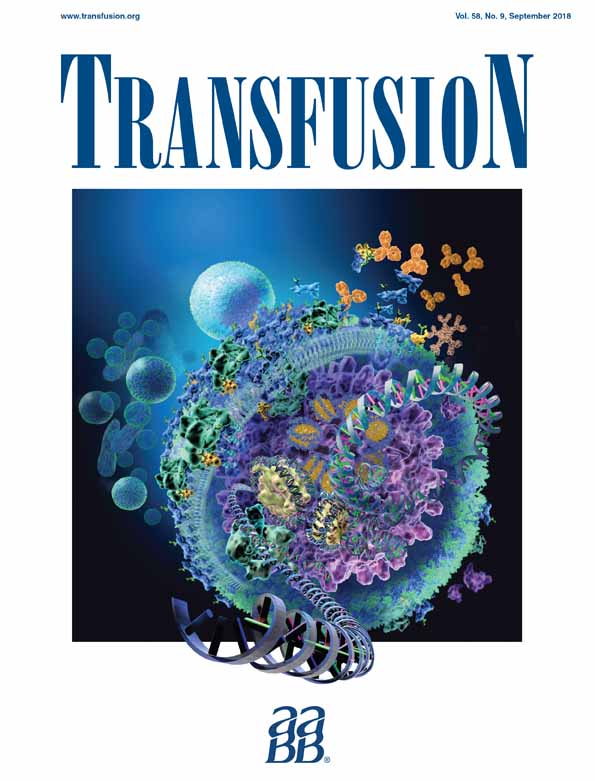Comparison of automated and manual methods for washing red blood cells
Abstract
BACKGROUND
We sought to compare the quality of washed red blood cells (RBCs) produced using the ACP215 device or manual methods with different combinations of wash and storage solutions. Our aim was to establish manual methods of washing that would permit a shelf life of more than 24 hours.
STUDY DESIGN AND METHODS
Fourteen-day-old RBCs were pooled, split, and washed in one of five ways: 1) using the ACP215 and stored in SAGM, 2) manually washed and stored in saline, 3) manually washed in saline and stored in SAGM, 4) manually washed in saline-glucose and stored in SAGM, and 5) manually washed and stored in SAGM. Additional units were pooled and split, washed manually or using the ACP215, and irradiated on Day 14. Units were sampled to 14 days after washing and storage at 4 ± 2°C.
RESULTS
All washed RBCs met specification for volume (200-320 mL) and hemoglobin (Hb) content (>40 g/unit). Removal of plasma proteins was better using manual methods: residual immunoglobulin A in saline-glucose–washed cells 0.033 (0.007-0.058) mg/dL manual versus 0.064 (0.026-0.104) mg/dL ACP215 (median, range). Hb loss was lower in manually washed units (mean, ≤ 2.0g/unit) than in ACP215-washed units (mean, 6.1 g/unit). Disregarding saline-washed and stored cells, hemolysis in all nonirradiated units was less than 0.8% 14 days after washing. As expected, the use of SAGM to store manually washed units improved adenosine triphosphate, glucose, lactate, and pH versus storage in saline.
CONCLUSION
The data suggest that the shelf life of manually washed RBCs could be extended to 14 days if stored in SAGM instead of saline.




